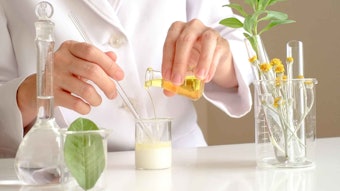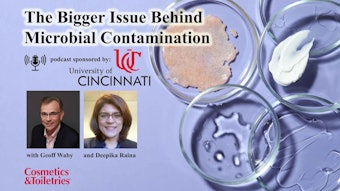To serve the novice cosmetic chemist and/or to refresh the seasoned formulator, Tony O’Lenick asks Perry Romanowski: Why is cosmetic preservation necessary, and why are preservatives vilified?1
There are two primary reasons preservatives are needed:
1. To stop microbes from spoiling products; and
2. To stop microbes from causing disease.
The microbes that can infect formulas primarily include bacteria, mold and yeast. In small quantities, they do not pose much of a problem, but when they multiply, look out. Bacteria like Pseudomonas can cause all kinds of health problems including skin and eye infections, toxic shock, strep throat and even food poisoning. Yeast like Candida albicans can cause thrush, and many other bacteria can cause products to smell awful, change color or otherwise break down. (This is what stability testing is for.)
Following is a list of common preservatives used in cosmetic and personal care products. As future (or current) formulators, readers will undoubtedly be using many of them.
Parabens
Parabens are the most commonly used preservatives. They are derivatives of p-hydroxybenzoic acid and include methylparaben, propylparaben and butylparaben. They are typically supplied as powders and can sometimes be difficult to incorporate into a system due to water solubility limitations. They are effective against a broad spectrum of bacteria and fungi. They do have pH limitations and are not effective against all microbes so formulators will usually need an additional preservative.
Formaldehyde Donors
Formaldehyde derivatives are the next most common preservative. These compounds interfere with membrane proteins, which kills microbes. They are effective against bacteria, fungi and mold. Bad press and real safety concerns have led cosmetic chemists to stop using formaldehyde. Instead, ingredients that dissociate into formaldehyde when put in a water solution are used. These are compounds like DMDM hydantoin, imidazolidinyl urea and gluteraldehyde. They are most often used in surfactant systems.
Phenol Derivatives
Phenol derivatives have been used in cosmetics for many years and can be effective against a range of microbes. Unfortunately, they are not as effective as the previous ingredients so their use is limited. The most common example is phenoxyethanol.
Quats
Compounds that contain nitrogen and have a positive charge when placed in solution are called quaternary compounds (or quats). Many of them demonstrate an ability to kill microbes. This includes ingredients like benzalkonium chlroide, methene ammonium chloride and benzethonium chloride. Their cationic nature makes them less compatible with anionic surfactants, which limits their application and use.
Alcohol
Ethanol is a great preservative but it must be used at high levels and therefore faces significant environmental restrictions. Other compounds like benzyl alcohol, dichlorobenzyl alcohol and even propylene glycol all have some antimicrobial effect. At lower levels, these compounds are less effective at preserving products.
Isothiazolones
Synthetic compounds like methylchloroisothiazolinone and methylisothiazolinone are effective at incredibly low levels. They have been shown to work at a wide range of pH levels and in many different formulas. Their use has been stymied, however, by at least one study that suggested it could cause skin sensitization.
Organic Acids and Others
Various other compounds are used as preservatives but all face some limitations not experienced to the same extent as the previous ingredients discussed. Some of the most important include: sodium benzoate, chloracetamide, triclosan and iodopropynyl butylcarbamate. Pyridine derivatives like sodium pyrithione and zinc pyrithione are used to kill the bacteria that causes dandruff.
More than any other ingredient, preservatives are considered by consumers to be the worst ingredients cosmetic chemists can use in formulas. Most, who know nothing about chemistry, have heard about the “evil” parabens and formaldehyde.
Preservatives are designed to kill cells. That is why they are effective. Unfortunately, that is also why they are potentially hazardous. They do not easily discriminate between good human cells and bad microbial cells but ultimately, the risk from using preservatives is significantly lower than that of using unpreserved cosmetics. There are safe levels of “toxic” chemicals. All chemicals can be deadly if one is exposed to high enough levels. How many people die from water exposure (e.g., drowning)?
Remember, it’s the dose that matters!
To be sure, research is ongoing in the field of preservatives since many materials previously deemed safe have been reclassified as hazardous. Suppliers who can come up with even safer preservatives will likely make a lot of money. Hopefully they will do it soon, as there is a great need for new and promising materials.
Reference
1. https://chemistscorner.com/how-to-prevent-contamination-in-cosmetic-products/










